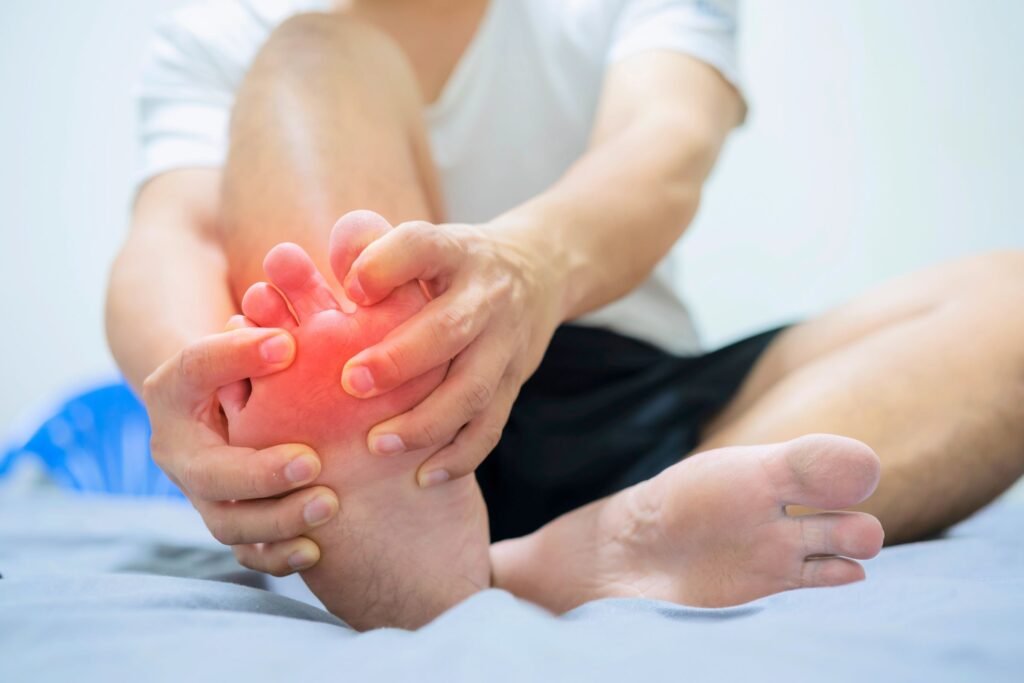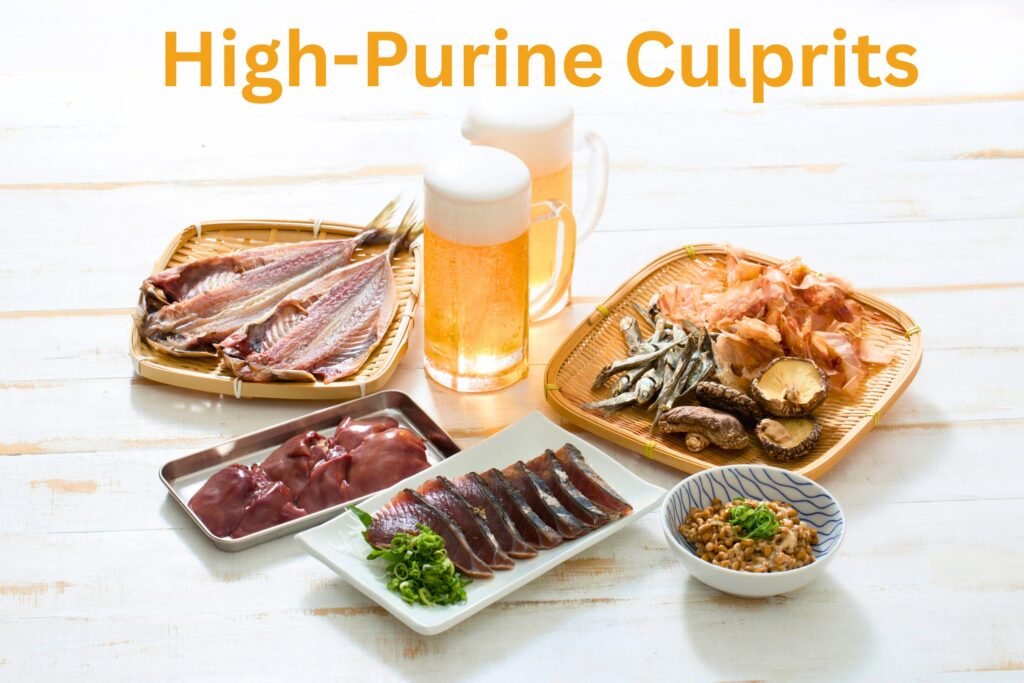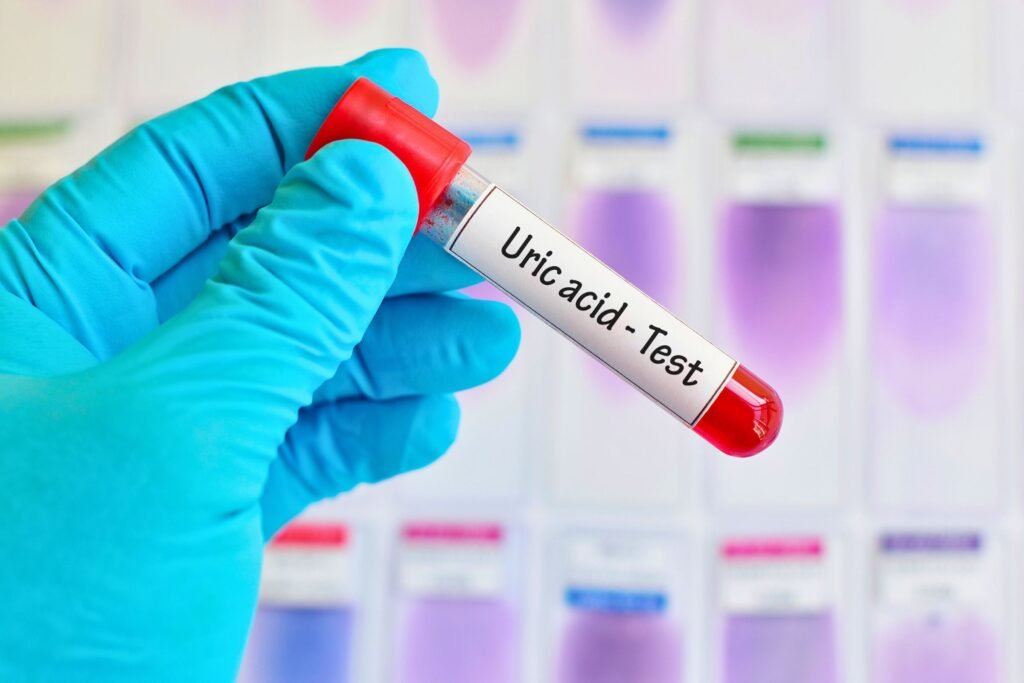In the tapestry of modern living, where the pursuit of the good life intertwines with culinary indulgence and leisurely pleasures, a silent adversary often lurks – gout. This form of arthritis, known for its sudden and excruciating joint pain, emerges as an ironic consequence of life’s luxuries. The very elements that make life enjoyable, from rich foods to fine wines and sedentary days, can give rise to the crystalline menace of gout.
This article delves into the paradoxical relationship between the good life and gout, offering insights into recognizing, controlling, and ultimately triumphing over this stealthy foe. From dietary adjustments to the intricacies of hydration, weight management, and the role of medications, we unravel the layers of gout management. As we navigate this delicate balance, understanding the call to action becomes paramount – an invitation to early recognition, proactive lifestyle adjustments, and seeking professional guidance. In doing so, we aim to unveil a path where the pursuit of the good life harmonizes seamlessly with the preservation of joint health.
What is gout

Gout is a form of inflammatory arthritis caused by the deposition of uric acid crystals in the joints. It typically affects the big toe, although it can also occur in other joints such as the ankles, knees, elbows, wrists, and fingers.
Uric acid is a waste product produced during the breakdown of purines, which are substances found in certain foods and drinks. Normally, uric acid dissolves in the blood and is excreted from the body through urine. However, in people with gout, either the body produces too much uric acid or the kidneys are unable to eliminate enough of it, leading to high levels of uric acid in the blood (a condition called hyperuricemia).
When uric acid levels become too high, uric acid crystals can form and accumulate in the joints, causing inflammation, swelling, intense pain, redness, and warmth in the affected joint. Gout attacks often come on suddenly and can be triggered by factors such as consuming certain foods and beverages (e.g., alcohol, red meat, seafood, sugary drinks), dehydration, stress, obesity, certain medications, and underlying medical conditions.
While gout can be extremely painful during acute attacks, the condition can be managed with lifestyle changes (such as dietary modifications, weight management, and staying hydrated) and medications (such as nonsteroidal anti-inflammatory drugs, corticosteroids, colchicine, and medications that lower uric acid levels). Long-term management aims to prevent future gout attacks and reduce the risk of complications such as joint damage and kidney stones.
Recognizing the Culprit
Gout, a form of arthritis, manifests through sudden and intense bouts of pain, swelling, and redness in the joints. The root cause lies in the accumulation of uric acid crystals. These crystals crystallize when an abundance of uric acid accumulates in the bloodstream, primarily triggered by dietary choices high in purines, excessive alcohol intake, and a sedentary lifestyle.
Understanding the Mechanism
When the body breaks down purines found in certain foods and drinks, uric acid is produced. Normally, the kidneys filter out this acid, but an excess can overwhelm the system, leading to the formation of sharp uric acid crystals. These crystals then deposit in the joints, causing inflammation and the agonizing symptoms characteristic of gout.
The Role of Rich Diet
Consuming foods high in purines, such as red meat, organ meats, and seafood, contributes significantly to elevated uric acid levels. Individuals with a penchant for indulging in these delights may find themselves more prone to gout attacks.
Alcohol’s Influence
Alcohol, especially beer, has been linked to an increased risk of gout. It not only hampers the body’s ability to eliminate uric acid but also promotes its production, creating an environment conducive to crystal formation.
Sedentary Lifestyle’s Impact
A lack of physical activity can further exacerbate the risk of gout. Regular exercise aids in maintaining a healthy weight and improving overall metabolic function, helping to regulate uric acid levels and mitigate the chances of crystal buildup.
nderstanding these intricacies is pivotal in recognizing the early signs of gout and implementing preventive measures to curtail its progression.
Dietary Adjustments

Taking charge of your diet is a fundamental step in managing gout. By making strategic adjustments, you can actively reduce uric acid levels and minimize the risk of painful flare-ups.
Identifying High-Purine Culprits
Red meat, organ meats, and certain seafood are rich sources of purines, which break down into uric acid. Limiting the intake of these foods can have a profound impact on reducing uric acid production.
Embracing Low-Purine Alternatives
Incorporating a variety of low-purine options into your diet is crucial. Opt for lean proteins like poultry, tofu, and legumes. Vegetables and fruits, which are generally low in purines, can form the foundation of a gout-friendly diet.
Mindful Alcohol Consumption
While complete abstinence may not be necessary, moderating alcohol intake is key. Beer, in particular, has been associated with an increased risk of gout, so opting for wine or spirits in moderation may be a more suitable choice.
Hydration as a Key Player
Staying well-hydrated is a simple yet powerful strategy. Adequate water intake helps flush out excess uric acid from the body, preventing its crystallization in the joints. Aim for at least 8 glasses of water a day to maintain optimal hydration.
Balancing and Monitoring
Maintaining a balanced diet is essential for overall health and gout management. Consider working with a healthcare professional or a nutritionist to create a personalized dietary plan that aligns with your preferences and lifestyle while effectively controlling uric acid levels.
By embracing these dietary adjustments, you not only gain control over uric acid levels but also empower yourself to enjoy a fulfilling and health-conscious lifestyle, free from the shackles of gout-related discomfort.
Hydration

In the battle against gout, the role of hydration cannot be overstated. A well-hydrated body is a formidable defense mechanism, actively working to flush out excess uric acid and maintain joint health.
The Importance of Water
Water is the elixir of life, and in the case of gout, it serves as a natural purifier. By increasing your daily water intake, you aid the kidneys in efficiently excreting uric acid. This not only prevents the crystallization of uric acid in the joints but also reduces the overall concentration of uric acid in the bloodstream.
Guidelines for Optimal Hydration
To harness the full benefits of hydration, aim to consume at least 8 glasses of water per day. Spread your water intake evenly throughout the day, as consistent hydration helps maintain a steady flow of fluids through the kidneys, enhancing the elimination of uric acid.
Considerations for Beverages
While water is the primary hydrator, herbal teas and infused water can contribute to your daily fluid intake. However, it’s wise to moderate the consumption of sugary and caffeinated beverages, as they may have counterproductive effects on hydration.
Monitoring Urine Color
A simple yet effective way to gauge hydration is by monitoring the color of your urine. Ideally, it should be light yellow, indicating proper hydration. Darker urine may signal dehydration, prompting the need for increased water intake.
Hydration as a Lifestyle Choice
Incorporating a habit of regular hydration into your daily routine is a lifestyle choice that pays dividends in gout management. Keep a water bottle handy, set reminders if necessary, and make sipping water a conscious part of your day.
By maintaining optimal hydration, you not only support your body in its natural processes but also actively contribute to the prevention of gout attacks, allowing you to live a more comfortable and pain-free life.
Weight Management

Maintaining a healthy weight is a pivotal aspect of gout management, as it directly correlates with the risk of experiencing painful gout attacks. Here’s why weight management plays a crucial role in keeping gout at bay:
Understanding the Connection
Excess body weight is often associated with an increased production of uric acid and a reduced ability of the kidneys to eliminate it effectively. This creates an environment conducive to the formation of uric acid crystals, the hallmark of gout attacks.
The Impact of Adipose Tissue
Adipose tissue, or fat cells, can contribute to elevated uric acid levels. As the body mass index (BMI) rises, fat cells release substances that promote inflammation and hinder the normal processing of uric acid, fostering the conditions for gout flare-ups.
Strategies for Weight Management
Engaging in regular physical activity is a powerful tool for weight control and overall health. Incorporating a mix of aerobic exercises, strength training, and flexibility exercises not only aids in weight management but also improves metabolic function, assisting the body in regulating uric acid levels.
Balanced Diet for Weight and Gout Managemen
Adopting a balanced and nutritious diet is integral to both weight management and gout prevention. Emphasize whole foods, fruits, vegetables, and lean proteins while minimizing the intake of processed foods, sugary drinks, and high-purine items.
Consultation with Healthcare Professionals
Individuals aiming for weight management as part of gout prevention should seek guidance from healthcare professionals. Nutritionists and physicians can provide personalized advice, considering factors such as individual health conditions and lifestyle preferences.
Long-Term Benefits
Maintaining a healthy weight is not just about preventing gout attacks; it contributes to overall well-being. Achieving and sustaining a healthy weight helps manage various health risks, including cardiovascular issues and diabetes.
By prioritizing weight management through a combination of healthy eating and regular exercise, individuals can significantly reduce the likelihood of gout attacks and pave the way for a more active and pain-free life.
Medication

While lifestyle modifications form the foundation of gout management, in certain cases, medications play a crucial role in lowering uric acid levels and preventing recurrent gout attacks. Here’s a closer look at the pharmaceutical aspect of gout control:
Types of Medications
Xanthine Oxidase Inhibitors: These medications, such as allopurinol and febuxostat, work by reducing the production of uric acid. They are often prescribed for individuals with frequent gout attacks or elevated uric acid levels.
Uricosuric Agents: Drugs like probenecid enhance the excretion of uric acid by the kidneys. They are suitable for those who may not tolerate xanthine oxidase inhibitors or have inadequate response to these medications alone.
Colchicine: An anti-inflammatory medication, colchicine is commonly used for the treatment of acute gout attacks. It can also be prescribed prophylactically to prevent gout flares during the initiation of urate-lowering therapy.
Anti-inflammatory Medications: Nonsteroidal anti-inflammatory drugs (NSAIDs) or corticosteroids may be prescribed to manage pain and inflammation during acute gout attacks.
Consulting Your Healthcare Provider
It’s imperative to consult with a healthcare provider before starting any gout medication. They will consider factors such as the frequency and severity of gout attacks, overall health, and potential interactions with other medications.
Monitoring and Adjusting Medications
Regular monitoring of uric acid levels is essential to assess the effectiveness of medication. Healthcare providers may adjust the dosage or switch medications based on individual response and any side effects experienced.
Potential Side Effects and Interactions
Understanding potential side effects and interactions with other medications is crucial. Your healthcare provider will discuss these aspects and tailor the treatment plan to minimize risks while maximizing benefits.
Compliance and Follow-Up
Adhering to the prescribed medication regimen is vital for long-term gout management. Regular follow-up appointments with healthcare providers ensure ongoing monitoring, allowing adjustments to be made as needed.
Incorporating medications into a comprehensive gout management plan, under the guidance of a healthcare professional, can significantly enhance the control of uric acid levels and provide relief from the burden of gout attacks.
The Good Life Paradox

In the pursuit of a fulfilling and enjoyable life, there exists a paradox that many may overlook – the association between elements of the good life and the development of gout. Understanding this paradox is crucial in navigating the delicate balance between pleasure and health.
Rich Foods and Gout
Indulging in a gastronomic journey of rich foods, especially those high in purines like red meats, organ meats, and decadent seafood, can unknowingly lay the groundwork for gout. While these culinary delights satisfy the palate, they also contribute to elevated uric acid levels, setting the stage for the crystallization that characterizes gout attacks.
Fine Wines and Spirits
The clinking of glasses in celebration often accompanies the good life, but for those susceptible to gout, the choice of libations matters. Beer, in particular, has been linked to an increased risk of gout, while spirits in moderation may be a more prudent option. The irony lies in the fact that the very beverages that enhance social experiences may pose a threat to joint health.
Leisurely Days and Sedentary Lifestyle
The charm of leisurely days, filled with relaxation and moments of indulgence, can be a double-edged sword. A sedentary lifestyle, devoid of regular physical activity, contributes to weight gain and metabolic imbalances, both of which amplify the risk of gout. Recognizing that the pursuit of leisure should be complemented by an active and health-conscious approach is essential.
Recognizing the Paradox
Acknowledging the connection between the good life and the development of gout is the first step in breaking free from the paradox. It’s not about renouncing the pleasures of life but rather embracing them mindfully. Balancing indulgence with conscious choices, such as opting for healthier alternatives and incorporating regular exercise, allows individuals to revel in the good life without compromising joint health.
Striking a Balance
The key lies in striking a balance between enjoying life’s luxuries and prioritizing health. Choosing nutrient-rich foods, moderating alcohol intake, and incorporating physical activity into leisurely routines form a harmonious approach to living the good life while minimizing the risk of gout.
By recognizing and navigating the good life paradox, individuals can revel in the joys of existence without succumbing to the pitfalls of gout, creating a lifestyle that harmonizes pleasure with well-being.
A Call to Action

Gout, though often considered a consequence of the good life, demands a proactive response from those who experience its painful grasp. Recognizing the symptoms and taking decisive action can be the linchpin in mitigating the impact of this stealthy adversary.
Early Recognition of Symptoms
The initial twinges of pain, swelling, and redness in the joints should not be dismissed. Recognizing these symptoms as potential indicators of gout is the crucial first step. Early detection allows for timely intervention, preventing the escalation of gout attacks and potential joint damage.
Lifestyle Adjustments as a Defense Mechanism
Upon recognizing gout symptoms, swift lifestyle adjustments become paramount. This includes modifying dietary habits, curbing alcohol consumption, increasing physical activity, and prioritizing hydration. These proactive measures not only provide immediate relief but also serve as a foundation for long-term gout management.
The Consequences of Ignoring Symptoms
Turning a blind eye to gout symptoms can lead to more frequent and severe attacks, causing cumulative damage to joints. Prolonged uncontrolled gout may result in the formation of tophi – uric acid crystal deposits – that can deform joints and tissues. Addressing symptoms promptly is a preventative measure against these long-term consequences.
Seeking Medical Advice
Perhaps the most crucial aspect of the call to action is seeking professional guidance. Consulting with a healthcare provider ensures an accurate diagnosis and the development of a tailored management plan. Healthcare professionals can conduct tests to assess uric acid levels, evaluate the extent of joint involvement, and prescribe appropriate medications if necessary.
Tailoring a Personalized Plan
Every individual’s experience with gout is unique, necessitating a personalized approach to management. Medical professionals can craft a plan that considers the specific triggers, lifestyle factors, and overall health of the patient. This bespoke strategy maximizes the effectiveness of interventions and enhances the likelihood of long-term success.
In heeding this call to action, individuals experiencing gout symptoms empower themselves to regain control over their joint health. By embracing early recognition, making lifestyle adjustments, and seeking professional guidance, they embark on a proactive journey towards managing gout and enjoying a life unhindered by its debilitating effects.
Conclusion
In the intricate dance between the pursuit of the good life and the lurking threat of gout, awareness and proactive measures emerge as the guiding lights. Gout, the insidious consequence of indulgence, demands recognition and thoughtful action. The paradox lies in reveling in life’s pleasures without succumbing to the pitfalls that compromise joint health.
By understanding the triggers, embracing lifestyle adjustments, and heeding the call to early action, individuals can break free from the clutches of gout. It’s not a call for asceticism but a harmonious blend of enjoyment and health-conscious choices. Seeking medical advice becomes the cornerstone, providing personalized plans that navigate the unique landscape of each individual’s gout journey. In this delicate equilibrium, the good life becomes not a battleground but a celebration, where the joys of existence coexist with the pursuit of joint well-being.








